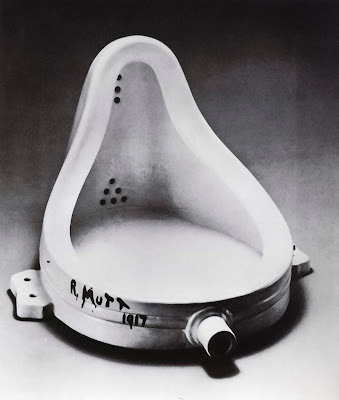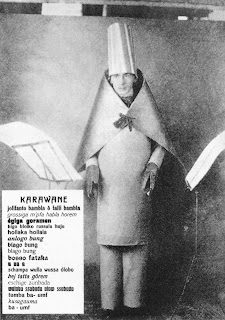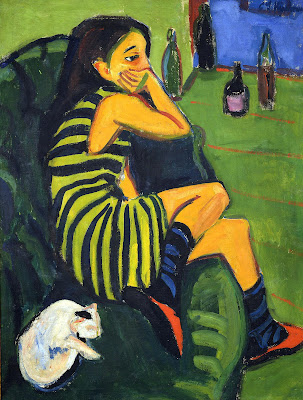The Importance of the Nude:
Hans Memling's Vanity and Jean-Auguste-Dominique Ingres's La Grande Odalisque
Female nudes have been ever-present in art history, but
Vanity by Hans Memling and
La Grande Odalisque by Jean-Auguste-Dominique Ingres are two examples of how a nude is perceived differently by the subject and the viewer. Both images are of women in private moments, in which they do not see themselves as nude because they are alone, however, when the viewer ventures into the private moment, without the woman's knowledge, she is seen as nude.
In
Vanity, the naked woman is depicted with a hand mirror. As the title seems to suggest, the painting demonstrates the vanity of the nude woman. The woman isn't naked when she is alone, but merely existing. The viewer sees her as naked and because she is seen holding a mirror, viewing her reflection, she is also being judged for her vanity. The irony is that she is not nude for her own pleasure, but she's nude for the pleasure of the viewer who is assumed to be male.
This particular painting touches upon the concepts of the idealized female body and voyeurism. Her hair appears long and flowing, she has small, round breasts, and wide hips, creating a pear-shaped body. Furthermore, she is shown without pubic hair, making her genitalia fully visible to the viewer, and despite her full nudity, she is shown wearing shoes as she stands in a field with three dogs. The setting of the painting leads to creating a voyeuristic feeling so the painting's presumably male viewers can be intrigued by the idea of getting caught with this naked woman outside, creating more thrill for him as he gazes upon her.
 |
La Grande Odalisque by Jean-Auguste-Dominique Ingres (French); 1814; oil.
Location: Paris, France; Musée du Louvre. |
 |
La Grande Odalisque (meaning The Great Concubine) features a naked woman in a harem who has been exoticized with Turkish-inspired backdrop and accessories. The woman is depicted, similar to
Vanity, with small, round breasts, wide hips, and a pear-shaped body. The viewer is immediately drawn in to the fantasy of this exotic beauty, but she remains demure as if she is unaware or does not mind being viewed. Only upon closer examination will one notice her left leg connects in a peculiar way, and that her right breast is not only situated unnaturally close to her arm but would also connect higher on her chest.
Women are depicted, idealized, and objectified more than men because, traditionally, paintings have always been viewed by males—to please and flatter them. King Charles II of England once commissioned a nude portrait of his mistress Nell Gwyn, which he showed off to other men. The details that men look for in women, these idealizations which have changed over time, have been internalized by women because in earlier times a woman's worth was once based upon her appearance alone. These ideas of the perfect body persist today not just in art, but in media and popular culture. It is not uncommon, in modern times, to see these projections
upon women done
by women, on themselves and upon other females. The root of this behavior can be seen in piece after piece throughout art history.












